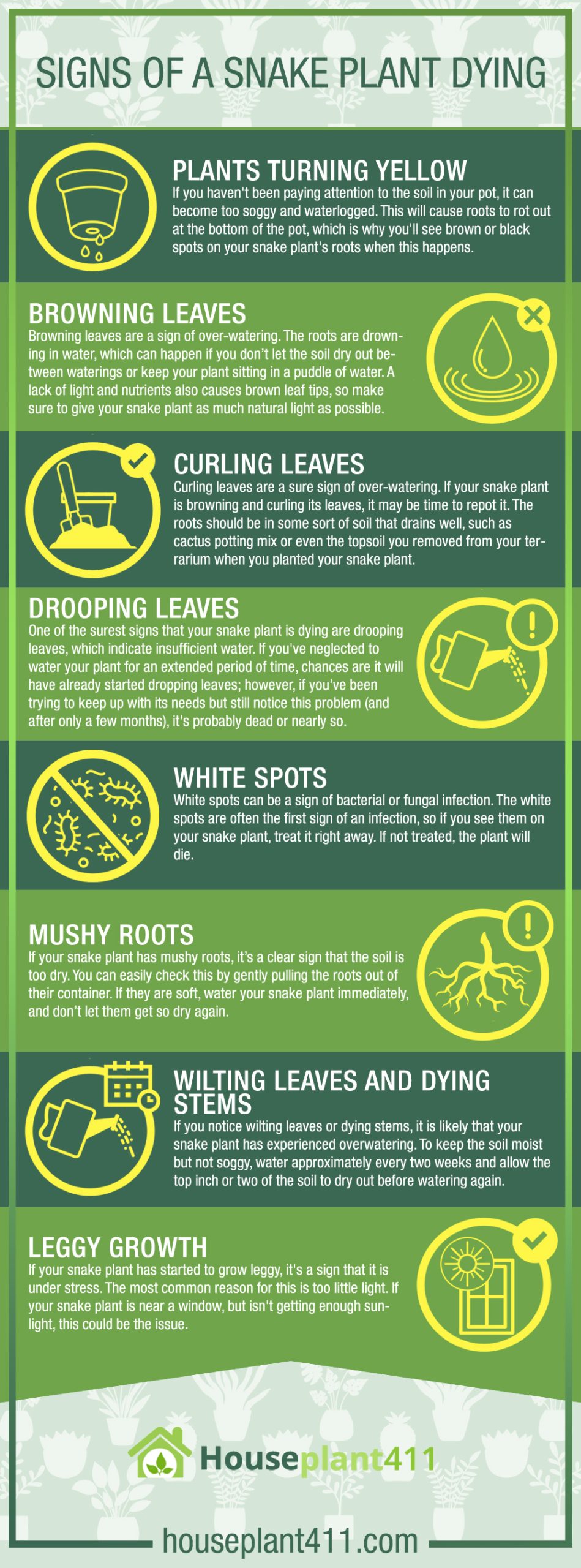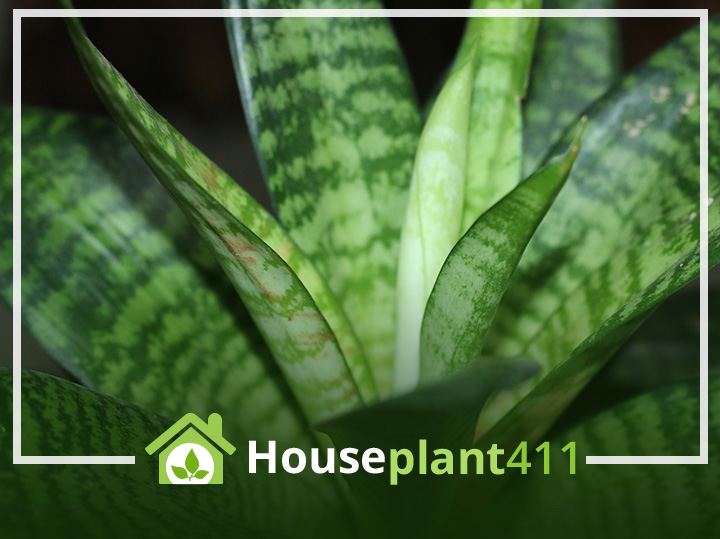Snake plant is one of the easiest to care for. It’s also one of the most stylish. But sometimes, even with its good looks and usability, a snake plant can suffer from problems that lead to death. If you think your snake plant is dying, here are some signs that your snake plant is dying:
Plants Turning Yellow
If your snake plant is turning yellow, it’s probably a sign of one of three things: over-watering, under-watering, or nutrient deficiency.
If you haven’t been paying attention to the soil in your pot, it can become too soggy and waterlogged. This will cause roots to rot out at the bottom of the pot, which is why you’ll see brown or black spots on your snake plant’s roots when this happens. You’ll also notice that this type of damage causes leaves to turn yellow and eventually fall off entirely as they begin rotting as well!
On the other hand—and perhaps more commonly, your snake plant could be getting too much water in its soil mix (especially if you’ve recently repotted). If you’re constantly watering your plant but not letting any excess drain out through drainage holes at its base (or if there aren’t any drainage holes), then all that excess moisture may result in root rot and leaf burn just like we mentioned above! So take care not only where those holes are located but also how often they’re being drained off so that things don’t get too wet for them below ground level!
Browning Leaves
Browning leaves are a sign of over-watering. The roots are drowning in water, which can happen if you don’t let the soil dry out between waterings or keep your plant sitting in a puddle of water. A lack of light and nutrients also causes brown leaf tips, so make sure to give your snake plant as much natural light as possible.
If you think your snake plant is getting too much fertilizer (which can also cause dark green leaves), stop fertilizing it altogether for a while and see if that makes any difference. If not, then maybe consider repotting it into fresh potting soil instead of using a leftover potting mix from another plant—that might be what’s causing an excess amount of nutrients to be released into its new home!
Curling Leaves
Curling leaves are a sure sign of over-watering. If your snake plant is browning and curling its leaves, it may be time to repot it. The roots should be in some sort of soil that drains well, such as cactus potting mix or even the topsoil you removed from your terrarium when you planted your snake plant.
If you’re not sure if your snake plant needs water or fertilizer, check out our guide on how often to water a succulent. The general principles are the same for all succulents: they don’t need much supplemental water, but they do need some fertilizer every few months (and during summer when temperatures rise).
Drooping Leaves
One of the surest signs that your snake plant is dying are drooping leaves, which indicate insufficient water. If you’ve neglected to water your plant for an extended period of time, chances are it will have already started dropping leaves; however, if you’ve been trying to keep up with its needs but still notice this problem (and after only a few months), it’s probably dead or nearly so.
The best way to save a dying snake plant is by giving it more water than usual until all evidence of damage disappears—but be careful not to give too much! Snake plants can easily get sick from overwatering. When watering them, make sure the soil gets soaked thoroughly without getting too soggy, and allow excess water in the saucer below them before taking any away again.
If this doesn’t work after several weeks, try repotting into fresh potting soil instead.
White Spots
White spots can be a sign of bacterial or fungal infection. The white spots are often the first sign of an infection, so if you see them on your snake plant, treat it right away. If not treated, the plant will die.
Mushy Roots
If your snake plant has mushy roots, it’s a clear sign that the soil is too dry. You can easily check this by gently pulling the roots out of their container. If they are soft, water your snake plant immediately, and don’t let them get so dry again.
To clean up after this mess, use an old toothbrush to gently scrub away any excess dirt from around the roots before you replant in fresh soil.
Wilting Leaves and Dying Stems
If you notice wilting leaves or dying stems, it is likely that your snake plant has experienced overwatering. To keep the soil moist but not soggy, water approximately every two weeks and allow the top inch or two of the soil to dry out before watering again. Overwatering can lead to root rot and cause the plant to die.
Leggy Growth
If your snake plant has started to grow leggy, it’s a sign that it is under stress. The most common reason for this is too little light. If your snake plant is near a window, but isn’t getting enough sunlight, this could be the issue. Your best bet is to move it closer to the window or try increasing its exposure to natural light by turning off any indoor lights while the sun shines through.
Another possibility is that you’re not watering your snake plant enough. This can happen if you’ve recently moved from one location with higher humidity to another with less humidity (for example, from New York City in wintertime). Snake plants need more water during these times of year because their roots cannot absorb water as effectively due to lower relative humidity levels. Just make sure you’re leaving enough time between each watering so that all of this extra moisture can evaporate before giving your snake plant another dose of liquid love!
If neither of these explanations applies and your lovely spiky friend still looks like it needs some help, then maybe it’s time for some fertilizer! Just remember what I said earlier about over-fertilizing, though—you want just enough nutrients so they don’t burn but also don’t forget how much care goes into making these guys thrive too!”

Conclusion
These are just some signs you can watch for to determine whether or not your snake plant is dying. Sometimes, plants die from a disease or pest infestation that cannot be cured. But if you notice any of these signs, there are ways to help your snake plant live longer and thrive better. You may be able to save the plant by giving it more light or repotting it into fresh soil with new nutrients.

